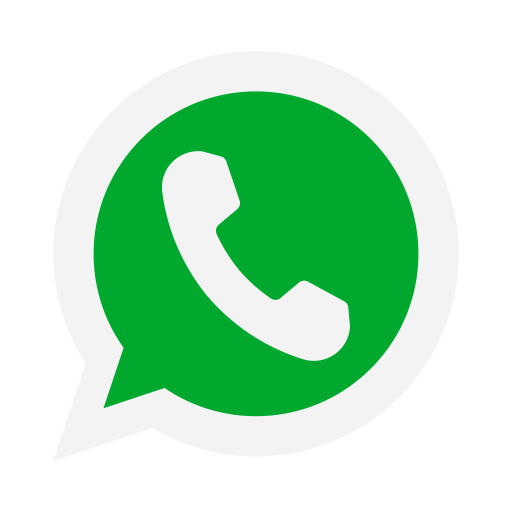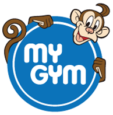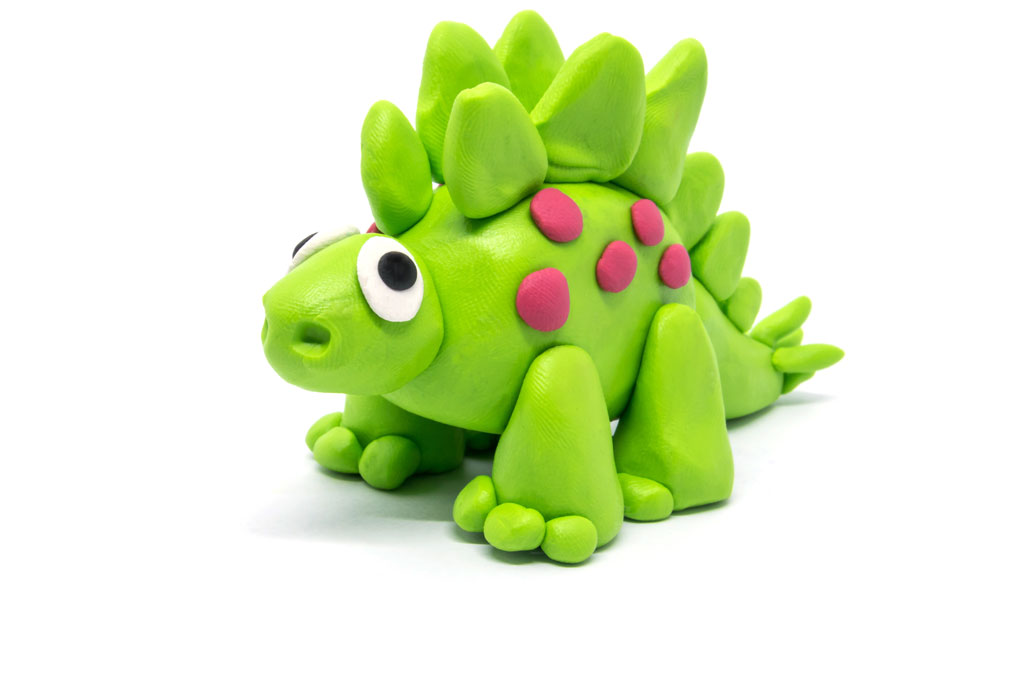Preschool Activities For Toddlers At Home
Toddlers are very busy people. They want to get involved with everything that is happening around them at home. Getting their hands into everything. Wanting to know how things work. Questioning you in their own cute, babbling sort of way only a mother can decipher.
Some of these questions stump even them, because they haven’t thought about it in that way. But it is all fun for toddlers and they never get tired or are bored of being curious.
You can help toddlers discover and accelerate their understanding of the world around them through fun activities. And they learn best by doing, using their hands even if they get messy. The more messy, the more they will enjoy moving and handling things all by themselves.
Home schooling toddlers

Most of the skills pre-schoolers need is by learning them through play. And you can create a fun activities plan for your child, making it engaging and educational at the same time. Better still, you could write a playbook as a guide with an objective of developing specific skills in toddlers.
Before you start on a preschool activity plan, ask yourself, what do you want your child to know before she starts kindergarten? Then work backwards. This way, you will begin to make great additions to your preschool age activities at home curriculum. It will be awesome.
Begin at the beginning
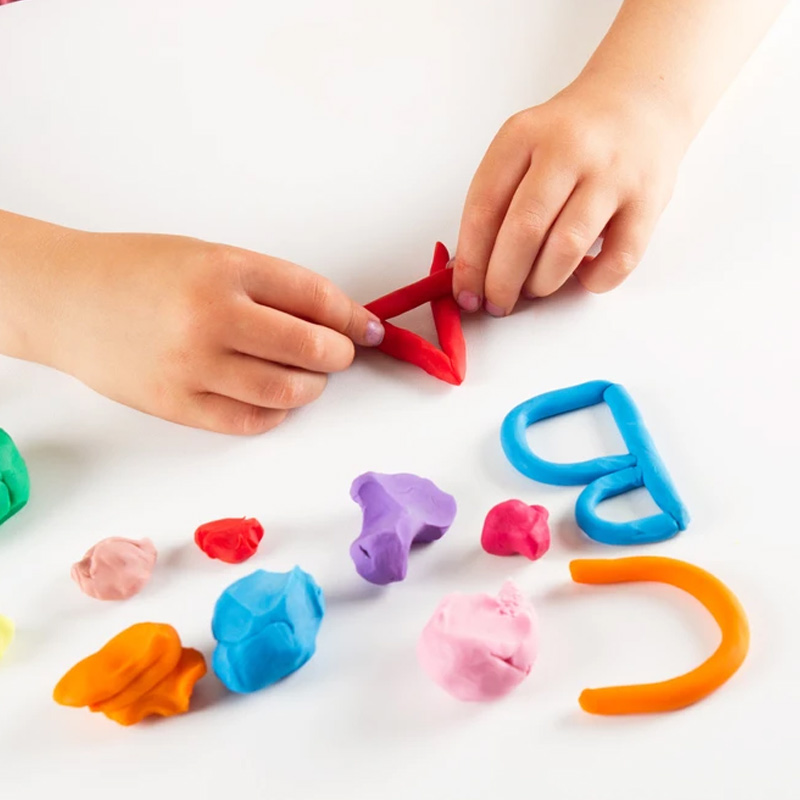
The first steps to learn to read is recognizing the alphabets. Your child should be able to identify the letters, how they sound and be able to match the capital letters with the smaller case letters, by the time she is ready for kindergarten.
As with all creative learning activitiesit is very important to build your child’s confidence levels and not undermine it. So take it slow and maintain a pace toddlers are comfortable with. Remember to build on what your child already knows and expand slowly. Most important, make this interaction exciting and fun. You want your child to love learning and not be afraid of it or think of it as a drudge. Right?!
An alphabet a day is a happier way

Every day, pick one or two letters that you and your child can craft together. Cut out the letters “A&B” from a small piece of cardboard, and saying it aloud as you are cutting them out.
Your child will quicky pick up how each letter sounds. You can also ask your child to repeat the alphabets a couple of times after you say them. Then, you can draw an Apple and a Bear, and startcolouring them.
By the time you complete all the alphabets A to Z, your child would have learnt most of them. But if she missed out on some of them, it doesn’t matter. You can move onto the next play and tell alphabet activity that will reinforce alphabet learning.
Hunting for the letters
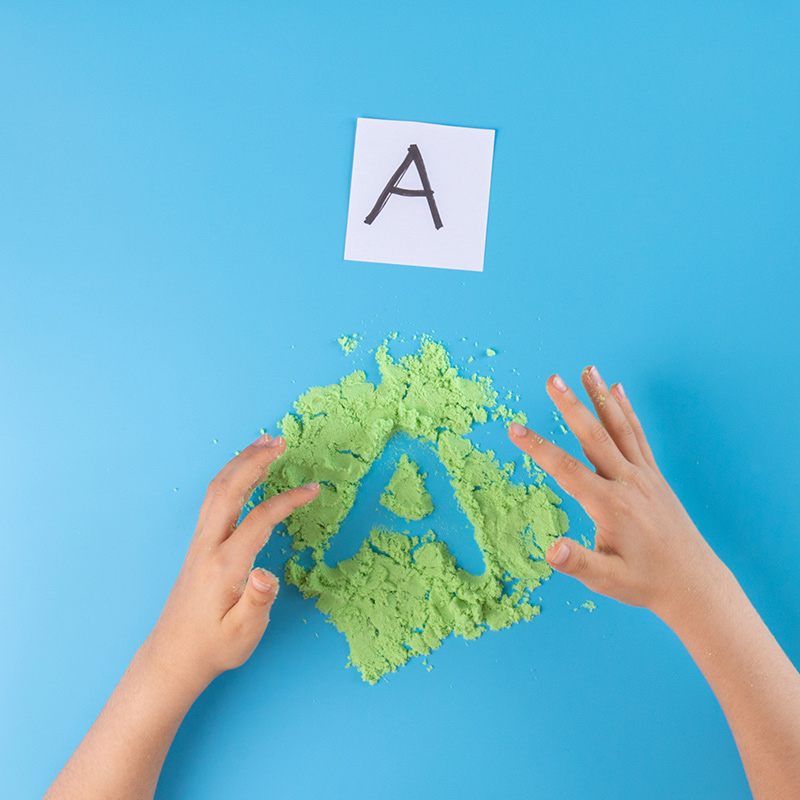
Creative learning activities are not only fun but exciting at the same time. Try this one out for yourself.Drop all the alphabets that you had crafted and coloured into the alphabet bag. You are going to play a game by dipping your hand into the bag and pulling out one letter at a time, and saying it aloud.
Let your child also do the same, pulling out a letter and saying it out loud. It is not likely to be dull or boring anymore. A is for Apple. B is for bear or a ball. C is for caterpillar. D is for duck. E is for Elephant.
F is for Fox.
G is for Giraffe…and so on till you reach Z for Zebra. Before you realize it, your child will be getting to pronounce all the alphabets and what each of them stands for correctly. It is a great and an easy way to learn.
Don’t stop until your child is able to recognize all the alphabets and can repeat each of them aloud correctly and confidently. Once she is done with this part, she’ll be ready to take the next big step – learning how to form the alphabets.
Learning to write

Your next step is to get your child interested in fun preschool writing activities. Your focus is on creating and introducing writing exercises one at a time. Toddlers will get a hang of forming letters faster by writing them, more as play than as a lesson.
Your child can start by practicing forming alphabets by using her finger to write an alphabet in a tray filled with sand. Just shake the tray to erase and start all over again. To make it more fun, use coloured sand in the tray.

Then move to tracing alphabets already written on an A4 worksheet. Start with a pencil and then using a crayon. Review each alphabet as your child learns to write, saying it aloud together and giving each other a high five when you get it right!
Developing fine motor skills

Many of the skills children will need in kindergarten require fine motor control. Especially when toddlers find it difficult to grip a pencil or crayon, you can get them to practice severalactivities that develop fine motor skills. One such activity is particularly effective.
The ear bud and straw activity is not onlychallenging but also fun. Doing it will help your child develop eye hand coordination, visual skills and matching skills. It will also teach your child the right way to hold a pencil or crayon and will save her from a lot of trouble in handwriting later on when she joins a kindergarten.
Pick up a bunch of paper straws and cut them into equal length of not more than an inch or two. Dump a few cut straws and the cotton buds into a cup containing a colour – it can be red, green, blue, yellow… any colour really.
Once the dye seeps into the cotton buds and into the cut straw, take them out and dry them on a newspaper. Now you are ready for some interesting fine motor skill and matching activity.
Present your child with the straws and dyed cotton buds and have her thread a cotton bud through a similar coloured straw. There are several such fun activities that can help prepare and develop your child’s fine motor and colour matching skills at the same time.
Learning math through play
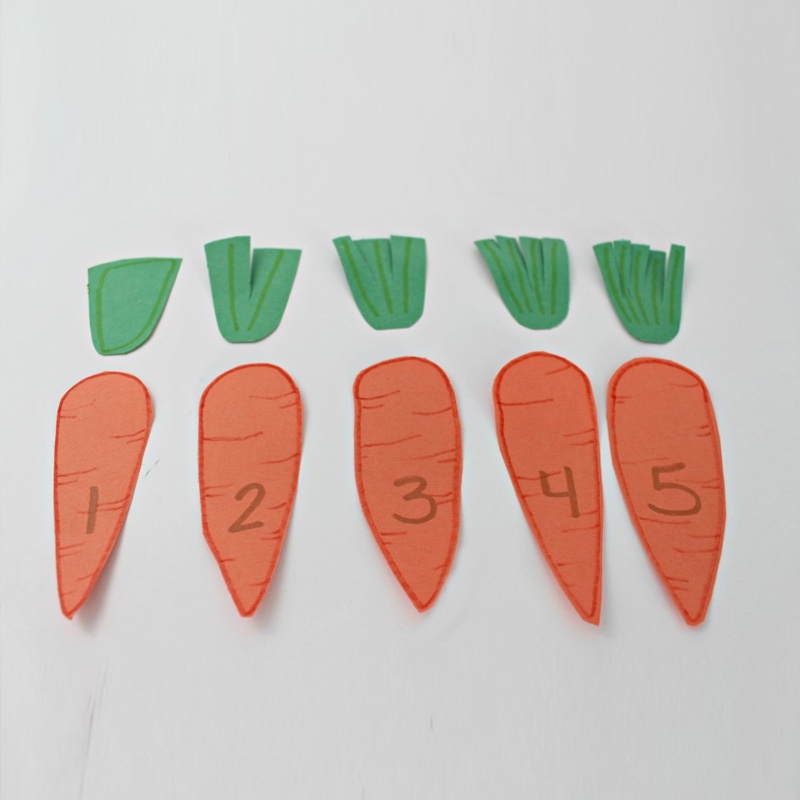
Introducing numeracy activities for pre-schoolers early will play a critical role in shaping their future. And you can work on developing your child’s math skills long before she is ready for formal schooling. An effective preschool math at home program is hands-on play. Leading your child through simple activities and making sure she masters each skill.
This is both easy and a lot of fun.Remember, children are natural sorters and organizers. They build and design. They have an instinct to learn and this comes through the act of playing. In fact, children get totally involved when playing with math.

Counting the carrots
This is part-craft, part-counting practice. Cut out carrots and leave sprouts, then ask your child to write down the numbers 1 to 5 on the sprouts or on the carrot itself. Mix them up and get your child to lay them out in the right sequence. You can use this activity as a shape refresher for triangle and rectangles as well. Remember to include it in your preschool activity plan.
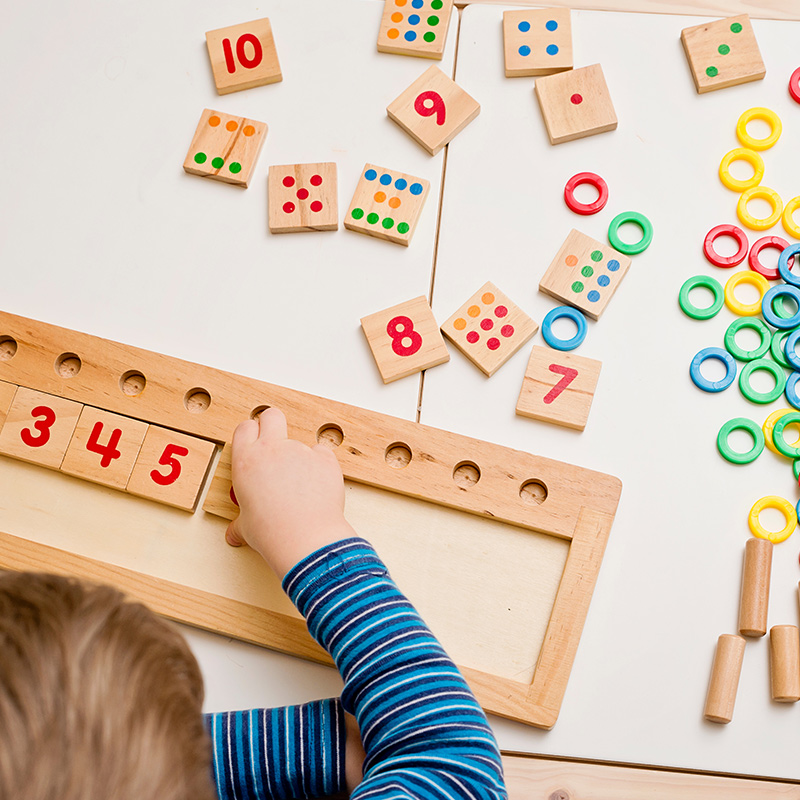
Match the missing number
While your child is learning to count from 1 to 9, throw in a little challenge. Write down numbers 1 to 9 on an ice cream stick — always leave one number out. Ask your child to fill the blank space with the correct number written on the clothespin. This not only helps the child to memorize numbers but also helps her to strengthen her finger and hand muscles as she has to squeeze the clothespin and put it in its place.

Adding Box
This will find a special place in preschool activity plan for your child. You can make adding box by yourself, all you need is two brightly coloured cardboard tubes, pieces of craftboard, 5 white and five blue marbles. Remember to involve your child in the process of making it.
Once ready with your adding machine, ask your child, “what’s 2 + 4=?” Don’t say anything, just wait and watch. If it is taking longer than usual, it is time to help out.
Drop two white marbles in one tube, and four blue ones in the other, and count the total in the collection box below. Ask your child to do that by herself and count the marbles.
The best part of such fun activities is they help build confidence. One big indicator of this is when younotice your child is wanting to do all of the activity on her own. She will drop 1 white marble and 2 and add up the total.In fact, she will keep varying the number of marbles she uses and working out the answers. Encourage her, even reward her with an ice cream treat!
About My Gym

If you want to learn about how you can plan more activities for young children in Singapore, make-time to visit My Gym, and don’t forget to bring your child. Give us a call or email and schedule a visit. A one-on-one interaction with experienced teachers will unravel several insights for better understanding. Besides, you will see for yourself how other toddlers and young children behave and handle themselves in a My Gym session. It will be a big eyeopener.
